When you end your game night with a game of Caper, you might tell yourself its “just one last job and then I’m out,” but you know in your heart that you’ll be shuffling up these cards again later that night, since you’re already planning that next heist. This time in London. No, Rome!
You’ll tell yourself that’s definitely your last job too, but this game is just too addictive. Is it the card art always pulls you back in? Maybe the thrill of the heist coming down to the final cards. Maybe you just need one more hit of those sweet victory points.
Maybe you keep coming back because, it turns out, while you were stealing from the game, the game stole something from you: your heart.
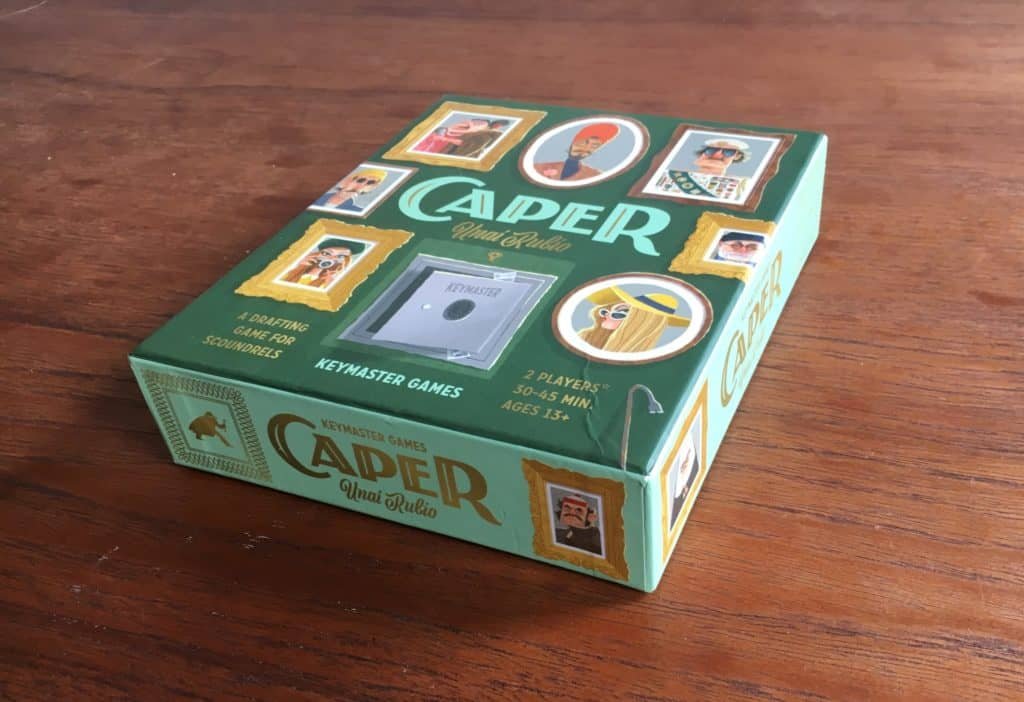
Caper Review: what’s this game all about anyway?
Caper is a card drafting game for two players, where each player plays as a mastermind coordinating a series of heists. You hand pick the very best people for the job and, give each of them equipment like grappling hooks and night-vision goggles to help pull off your plan. But only one mastermind can succeed at each location, so it’s a competition to outdo the opponent by winning the most locations and ultimately points.
The game is simple. You draft a hand of thief cards. You take a single thief card from your hand of cards and put them in a location, your opponent does the same from their hand, and you both swap hands until you run out of cards. After that, you repeat the same process, but for a hand of equipment cards, which you assign to a thief (up to 3 per thief) instead of a location. Then you draft another hand of thieves, followed by more equipment, thieves again, and equipment again. Then you score.
- Each location is worth points.
- A complete set of 3 different stolen goods is worth 7 points
- And there are thief and equipment cards that score points too.
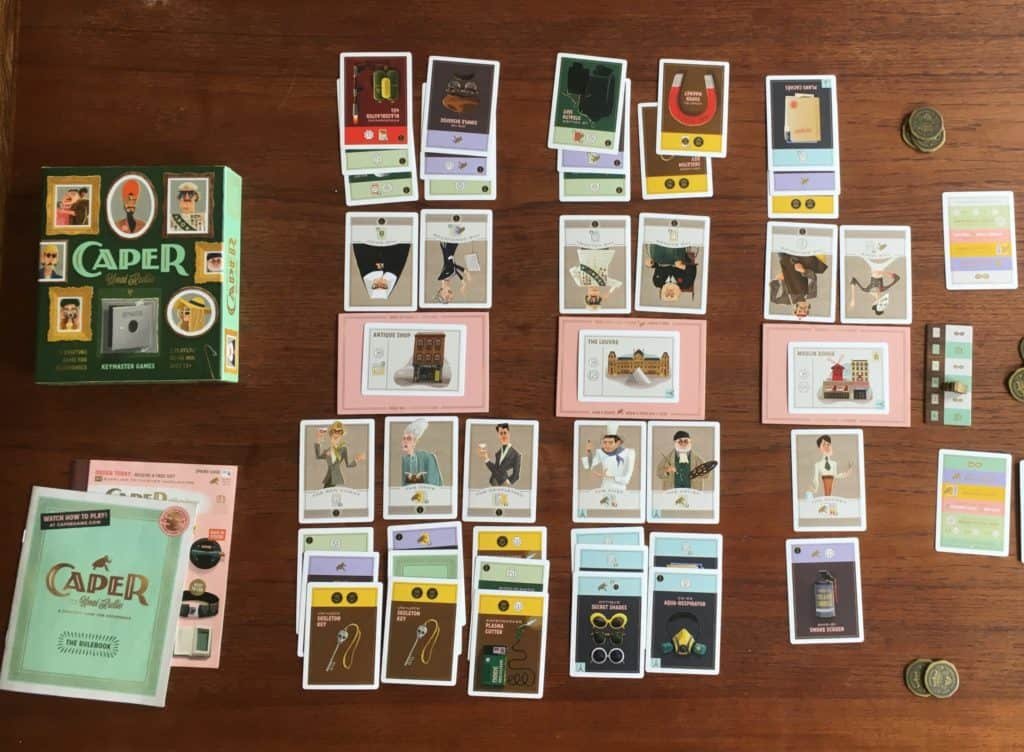
It sounds simple, right? Not so fast.
But is it good?
Every card you don’t take is a card your opponent might take, and you get to know every card in a round after passing only once. Now, this could be a curse if the game was meaner or if it asked you to do more complex calculations for each card. This is where two player drafting games often fall apart: they are either too simple, where the choices are all obvious, or it gets so complicated that you pull out that calculator you always keep in your pocket to spite your elementary school teacher.
But as it stands, it strikes the perfect balance: the cards are just complex enough to make sure you think about every pick, but simple enough to let you focus on the nuances of drafting without getting too bogged down into minutia. It strikes such a good balance that people might even argue about which end of the scale it leans towards. If you’re the kind of person who likes to wait until their cereal gets soggy to eat it, you’ll probably find it too crunchy. Personally, I think the gameplay has a pretty perfect balance of accessibility and complexity without the Captain-Crunch-Glass-In-Your-Mouth level of crunchy.
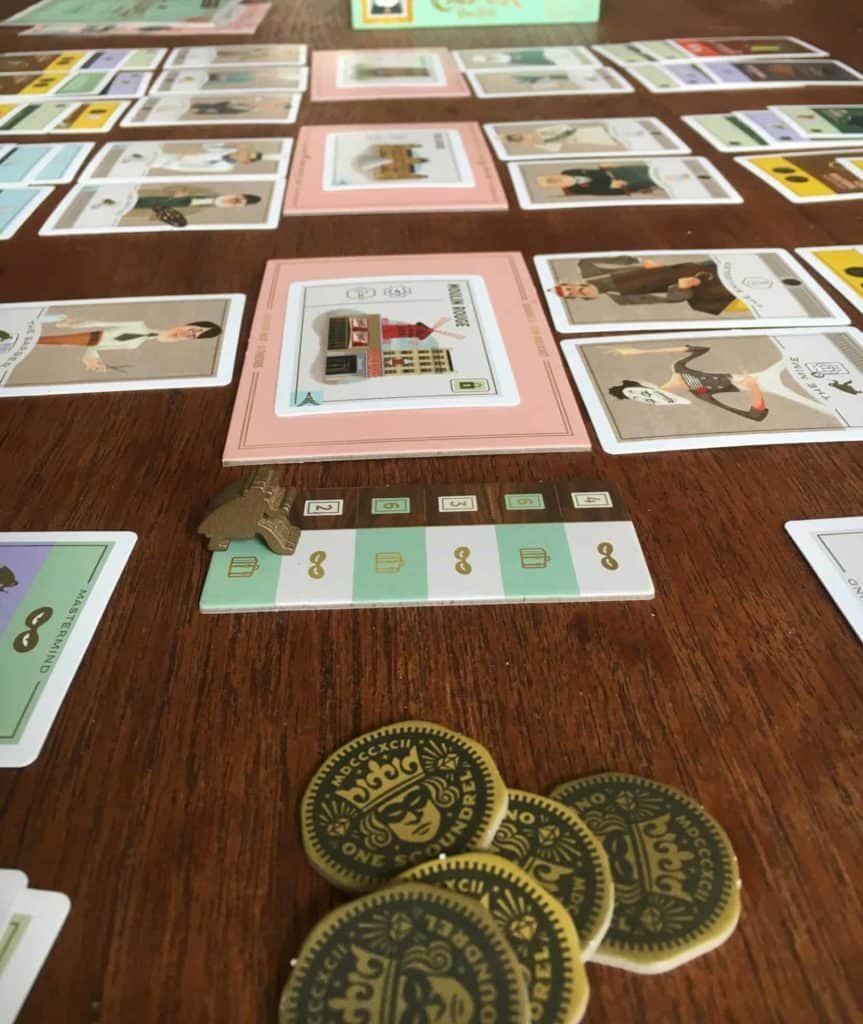
However, not every part of the game managed to to find itself on the right end of the complexity spectrum. Let’s talk about the production of the game.
First, I want to say it’s absolutely gorgeous. The art direction at Keymaster Games is among the best in the industry, and I’d put money down on that bet (the moral of the story is that if you run a board game company, you need to hire a typographer). The pieces are gorgeous. The location boards that serve little function but give the game surprisingly good table presence, have a fake wood finish on one side and a beautiful pink and gold finish on the other just for variety’s sake. The graphic design is so pristine, oil tycoons are trying to drill it. The art is a pleasure, beautifully stylized and funny in the way that you’ll want to tell your opponent which thief they are every time you play with someone new.

Yet for as well realized as their games are aesthetically, this one, one of Keymaster’s earliest titles, suffers in usability.
First of all, the iconography in the game, while nice to look at, is absolutely arcane to decipher your first time round. It takes what ultimately could have been game that teaches in 3-4 minutes, to a game that takes 5 times as long to explain. When I teach it, I feel obligated to go through almost every card in the thief deck, and explain them one by one. But there is a logical system to it, just one that shies away from easy intuition. Here are all the icons you have to learn, you can decide for yourself if you think you’d be overwhelmed learning them.
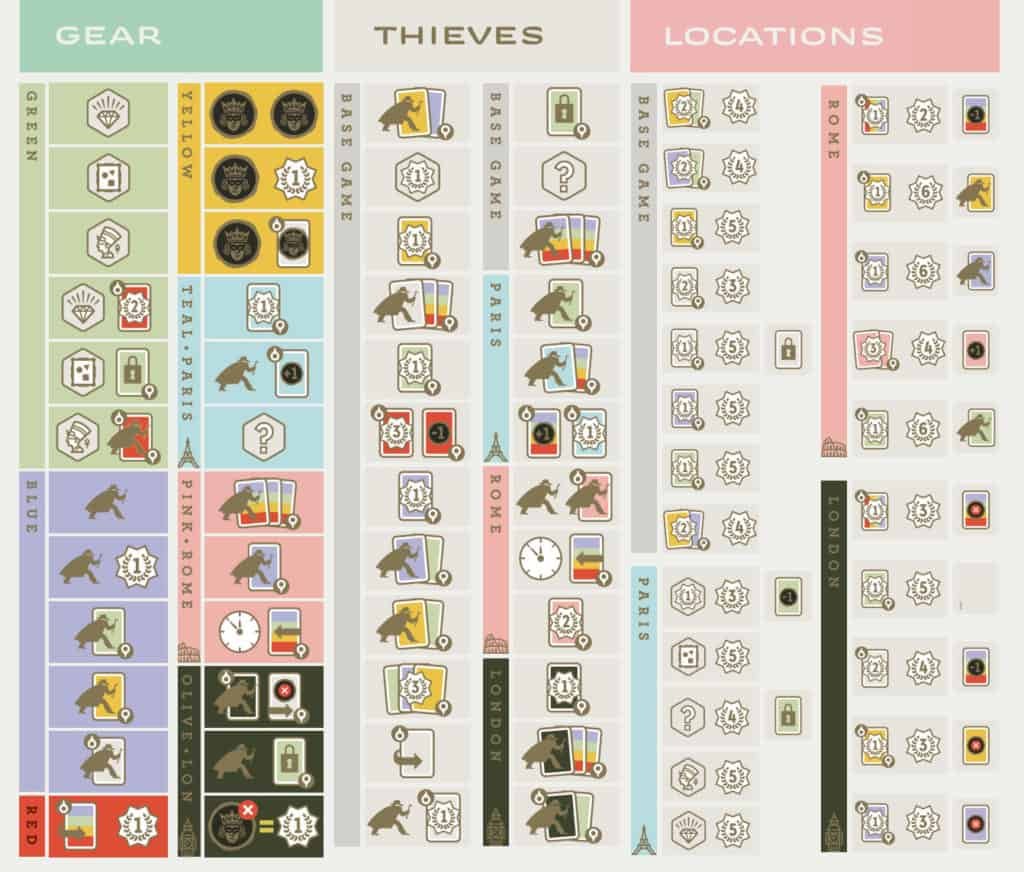
Now, it doesn’t effect game play much, since once you know the icons, you know them. And it’s not as much a usability problem as it is a learning speedbumb (a learning knoll perhaps?). If you’re afraid of a system you might struggle to memorize, like in other games known for their difficult iconography (We’re looking at you, Race for the Galaxy), don’t worry, it’s not that bad. It’s just mostly a bummer that a game that plays in 20 minutes takes nearly as long to teach.

It wouldn’t be fair if I didn’t mention that Keymaster anticipated this problem and shipped the game with a gorgeous extra manual, the caper catalogue, that lists every card and its effect in a quick and easy reference. I always tell new players about this manual, but no one I’ve ever played with has used it over asking me what a card does, so it doesn’t quite feel like a solution to me. But it’s there, and it’s nice.
Additionally, there are some odd choices in the rulebook for how certain colors are described. A color I would call purple is described as blue, and the color I’d call light blue is described as teal. These are barriers that will only barely slow you down as you’re going through the rules (board gamers are all in abusive relationships with the cruddy rulebooks publishers put out there, so you’ve certainly seen worse). However, I felt like I couldn’t not mention these flaws after claiming the game has the best art direction in board gaming.
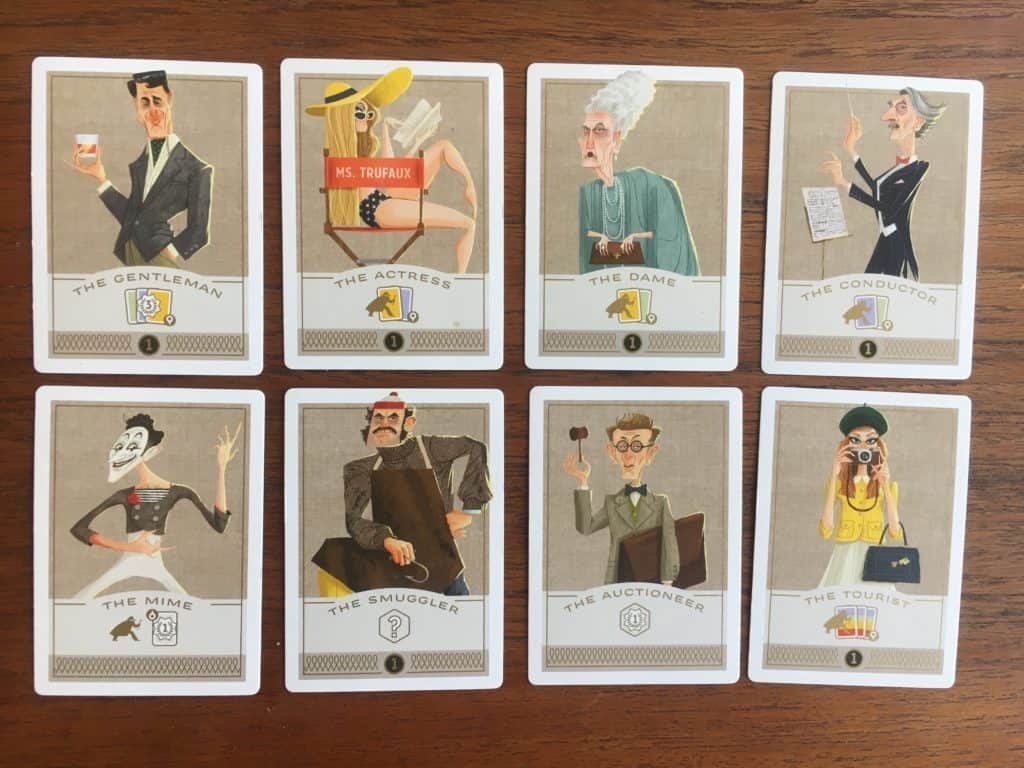
Next, let’s talk about the learning curve. This game took me a surprisingly long time before I felt like I gained mastery over it. After the first game or two, I learned the rhyme of the game, but it took me a while to feel like I had a grasp of the greater picture.
Drafting is inherently a mechanic that scales to high level of analysis, since every choice means something for you, and for your opponent in a bunch of different ways. (If you don’t believe me, check out this honker I wrote about 7 Wonders Strategy). But unlike 7 wonders, how valuable certain cards are depends far more on tactical considerations than strategic ones, primary among those considerations are the location cards.
This game comes with 3 different cities: Paris, London and Rome. In each city, you shuffle location specific location cards, thieves and equipment into their respective decks, giving you some element of customization in each game.
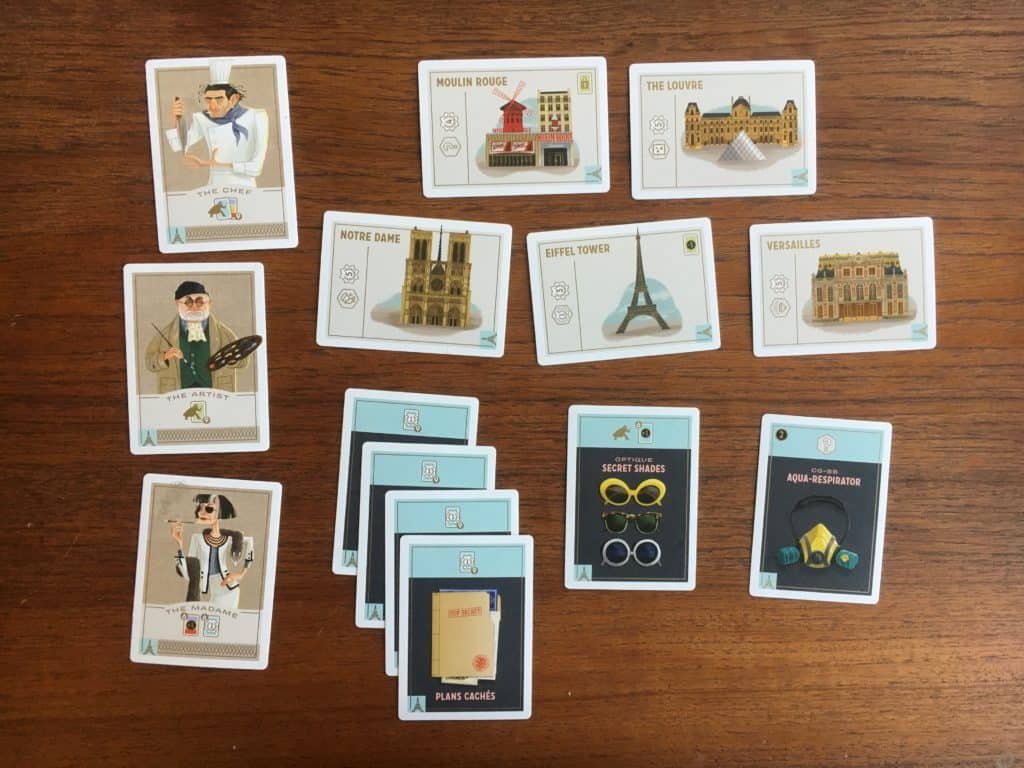
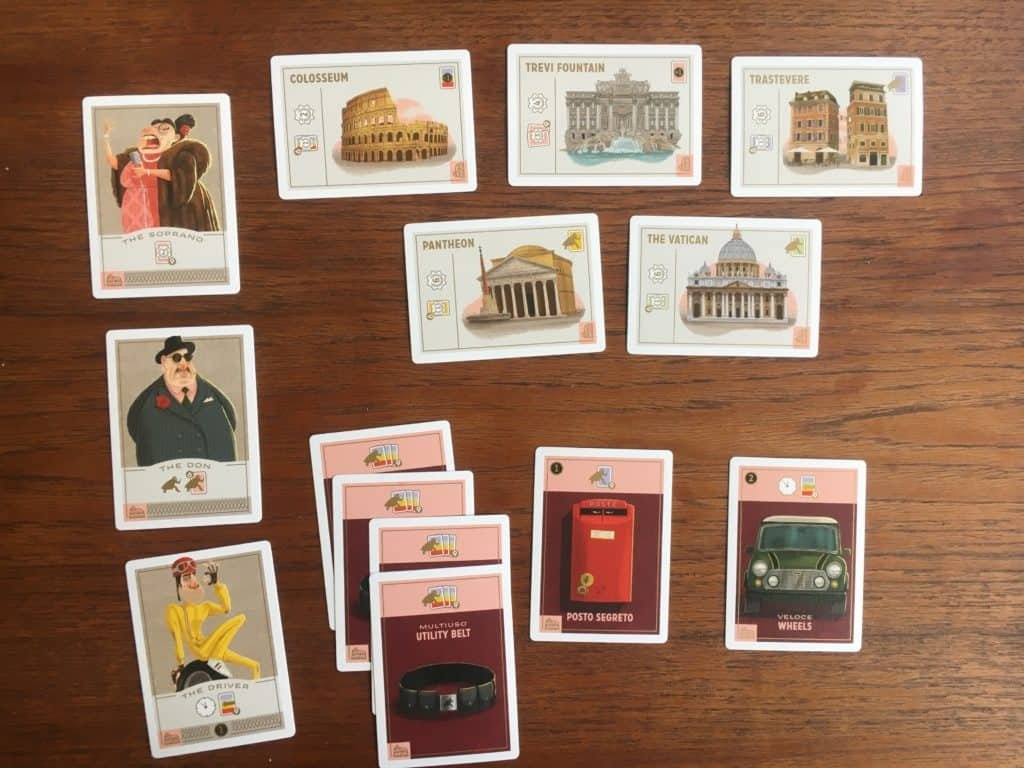

In Paris, there is an emphasis on stolen goods. For example, the Louve gives you the “art” stolen good if you win that location. Paris is a high scoring city, with a few cards to reign it in a bit. Paris is also the mechanically simplest city, and the recommended starting city.
Rome has a focus getting capers, the currency used to win locations, but the extra capers you get from being in Rome may translate to more points to your opponent if you don’t play wisely. Games in Rome do play out differently than Paris, but it’s not the biggest difference, and it’s one you’ll appreciate the more you play this game.
And London has a focus on the economy. There are cards that make the total money pool smaller. The game has a pool of 10 coins total, but in London, that might get as small as 6 coins between both players. There is a rule that states when you would gain gold but the supply is empty, take coins from your opponent while you have fewer coins. Outside of London, that rule seldom comes up. But in London, it is everything. Additionally, there are cards that force your opponent to loose coins, which add another wrench to the plan.
Of the three locations, London feels the most unique, and is the meanest by far. Games in London are all about passing cards to your opponent that they won’t be able to afford, while the gold producing equipment cards that aren’t typically a priority in the other locations reign king here. You’ll find yourself passing the best cards, hoping your opponent won’t be able to afford it either.
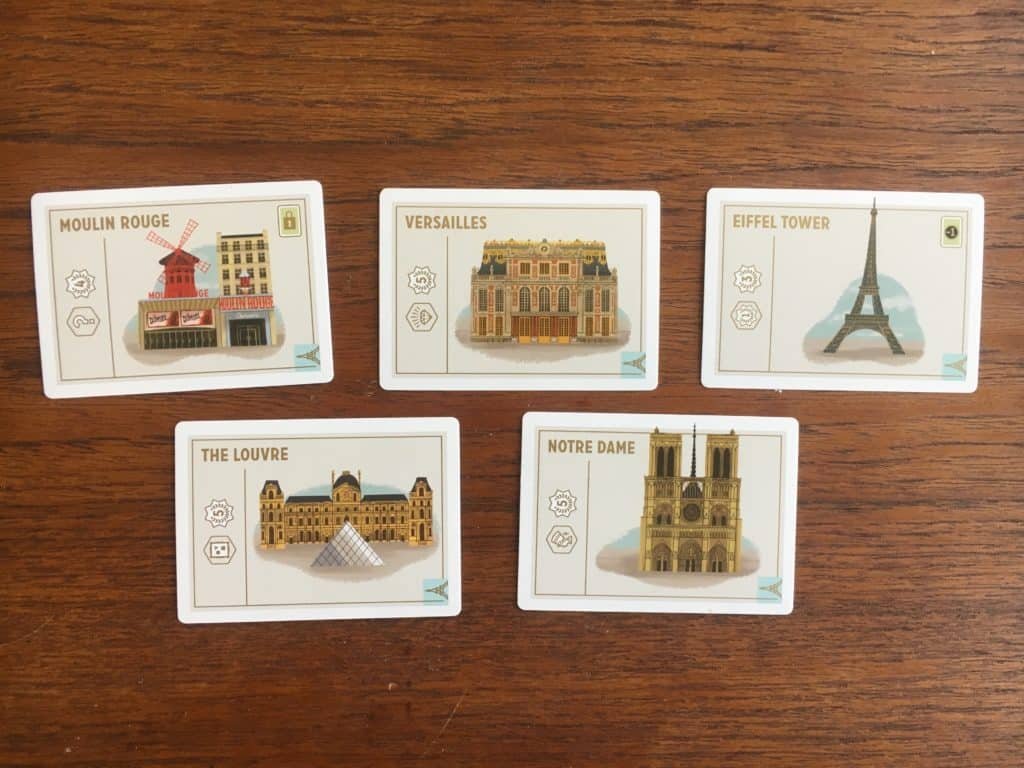
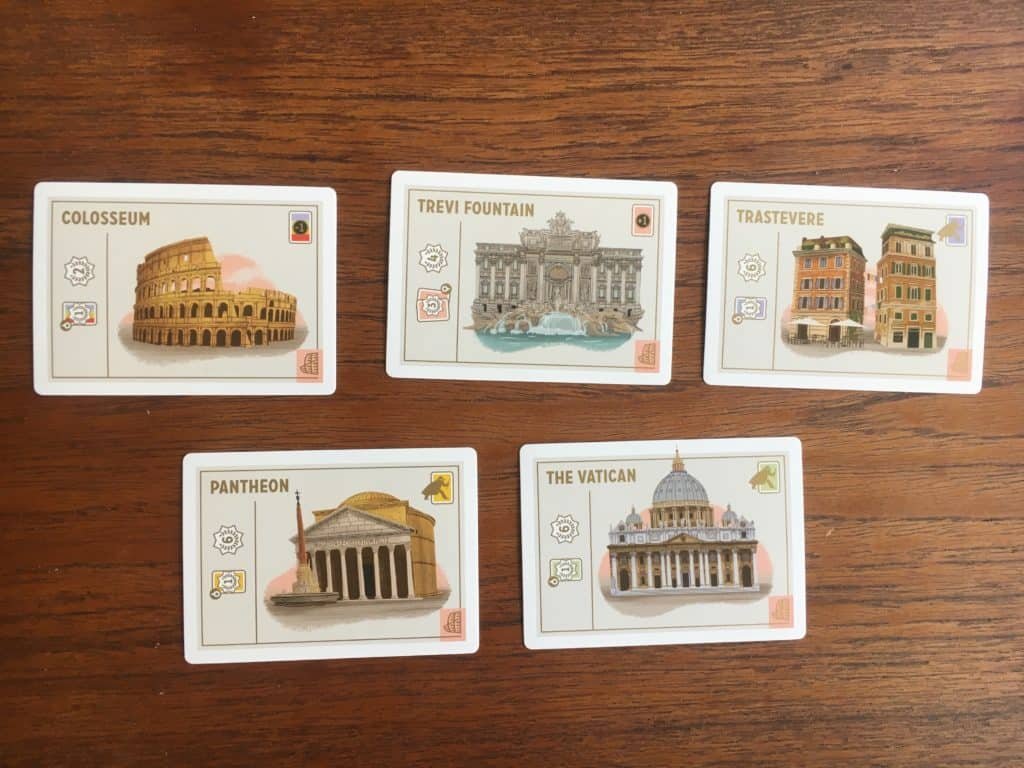

There are 23 location cards in the game, and each game only uses 3 of them. While many of those cards aren’t super different, they’re different enough to push you reconsider how you think about the cards. Add that on top of how the 3 thematic cities each force you to vary your strategy, and you have a recipe for a game that has excellent replayability. If you are into the idea of digging all the way into the nuance of drafting, it gets significantly more so.
All in all, I love this game, and I really need everyone reading this review to go out and buy a copy of it, because if you don’t, they may never make an expansion.
Hope you enjoyed my Caper review. Let me know in the comments if you’d like a strategy guide for this game!
Serious Caper Review Stats
Number of white people in this game: 22/23
Number of people who have been too ashamed tell Mattox Shuler he’s colorblind: Too many. (How is that teal?!)
Number of Expansions for Capers: 0 (😡)
Number of total icons to learn: 81



Great review. Never played this game but your review made me back the new Kickstarter edition out now. I’m now checking out your other reviews and articles…keep up the good work.
Just bought the game.. Your review makes me more understand about the rules.. Thank you very much.